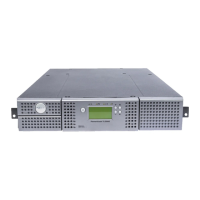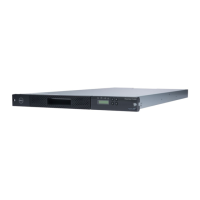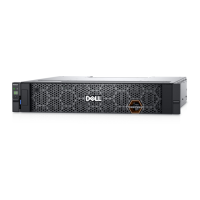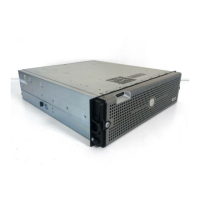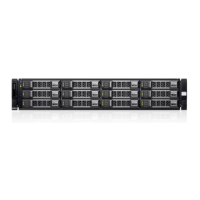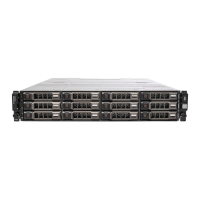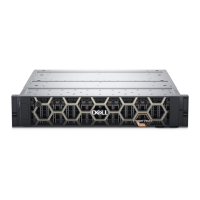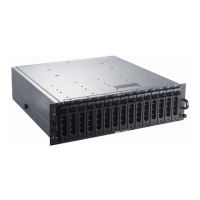Page
10
ListTargets command to display the target list.
<Report_To_PNP> is T, which exposes the LUN to the operating system as a storage
device.
<Target_Portal_Address> is the IP address of the iSCSI port on the controller
being logged into.
<TCP_Port_Number_Of_Target_Portal> is 3260.
<Login_Flags> is 0x2 to enable multipathing for the target on the initiator. This value
allows more than one session to be logged in to a target at one time.
<Username> is the initiator name.
<Password> is the target CHAP secret.
<Authtype> is either 0 for no authentication, 1 for Target CHAP, or 2 for Mutual
CHAP.
NOTE:
<Username>, <Password> and <Authtype> are optional parameters. They can be replaced with an asterisk (*) if
CHAP is not used.
<Mapping_Count> is 0, indicating that no mappings are specified and no further parameters are
required.
* * * An asterisk (*) represents the default value of a parameter.
For example, your logon command might look like this:
iscsicli PersistentLoginTargetiqn.1984-
05.com.dell:powervault.6001372000ffe333000000004672edf2
3260 T 192.168.130.101 * * * 0x2 * * * * * * * * * 0
To view active sessions to the target, use the following command: iscsicli SessionList
PersistentLoginTarget does not initiate a login to the target until after the system is rebooted.
To establish immediate login to the target, substitute LoginTarget for PersistentLoginTarget.
NOTE:
Refer to the Microsoft iSCSI Software Initiator 2.x User’s Guide for more information about the commands used in
the previous steps. For more information about Windows Server 2008 Server Core, refer to the Microsoft Developers
Network (MSDN). Both resources are available at www.microsoft.com.
If you are using a Linux Server
If you configured CHAP authentication in the previous steps, you must restart iSCSI from the Linux
command line as shown below. If you did not configure CHAP authentication, you do not need to restart
iSCSI.
/etc/init.d/iscsi restart
Verify that the host server is able to connect to the iSCSI to SAS bridge by running the iscsi -ls command
as you did in target discovery. If the connection is successful, an iSCSI session will be established to
each iSCSI port on the iSCSI to SAS bridge.
Sample output from the command should look similar to this:
*******************************************************************************
SFNet iSCSI Driver Version ...4:0.1.11-3(02-May-2006)
*******************************************************************************
TARGET NAME : iqn.1984-05.com.dell:powervault.6001372000f5f0e600000000463b9292
TARGET ALIAS :
HOST ID : 2
BUS ID : 0
TARGET ID : 0
TARGET ADDRESS : 192.168.0.110:3260,1
SESSION STATUS : ESTABLISHED AT Wed May 9 18:20:27 CDT 2007
SESSION ID : ISID 00023d000001 TSIH 5
*******************************************************************************
TARGET NAME : iqn.1984-05.com.dell:powervault.6001372000f5f0e600000000463b9292
TARGET ALIAS :
HOST ID : 3
BUS ID : 0
TARGET ID : 0
TARGET ADDRESS : 192.168.0.111:3260,1
Setting Up Your iSCSI ISCSI to SAS bridge 57
SESSION STATUS : ESTABLISHED AT Wed May 9 18:20:28 CDT 2007
SESSION ID : ISID 00023d000002 TSIH 4
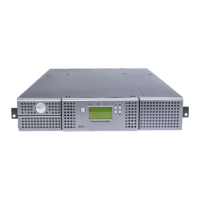
